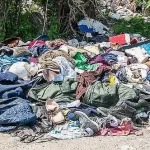A circular economy is one that keeps materials in use, at their highest value, for as long as
possible. It does so through products designed to be long lasting, easy to repair and recycle, and through systems that capture those products when they are no longer
wanted, either to sell them on to another user or recover their materials for another use.
Reuse is the most economically and environmentally beneficial strategy within a
circular economy. Finished products are worth much more than the raw materials they
are composed of and direct reuse preserves the most value and embodied energy. For
example, a reused iPhone retains around 48 per cent of its original value after two years,
whereas the value of the materials you can recover from it is just 0.24 per cent of its
original value.
If a discarded product is not immediately suitable for resale, sometimes it can be
restored to a sellable condition through repair, refurbishment and remanufacturing.
Remanufacturing is especially prevalent in the automotive sector and analysis suggests it
saves at least 70 per cent of the materials required to make new goods.1
Where a product cannot be resold, closed loop recycling is the next best opportunity
to recover some of its value. This involves using waste to make new products without
changing the inherent properties of the material being recycled. Examples include bottle
to bottle or alloy to alloy recycling. This includes recycling where the product changes
but the quality of the material is maintained, eg a plastic bottle made of polyethylene
terephthalate (PET) which is recovered and used to make a toy.  The way waste products are collected and sorted can mean it is not always possible to
The way waste products are collected and sorted can mean it is not always possible to
reprocess a material to its original quality because there is too great a mixture of
qualities and additives to process together. Under such conditions, the only opportunity
to capture value is open loop recycling, otherwise known as downcycling. This uses
recovered materials in place of lower value materials; for example glass, originally used
for packaging at £50 per tonne, is crushed and reused as construction aggregate with a
maximum value of £15 per tonne. (Source: Green Alliance)





